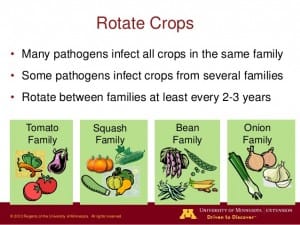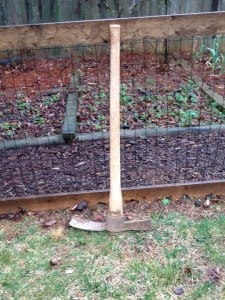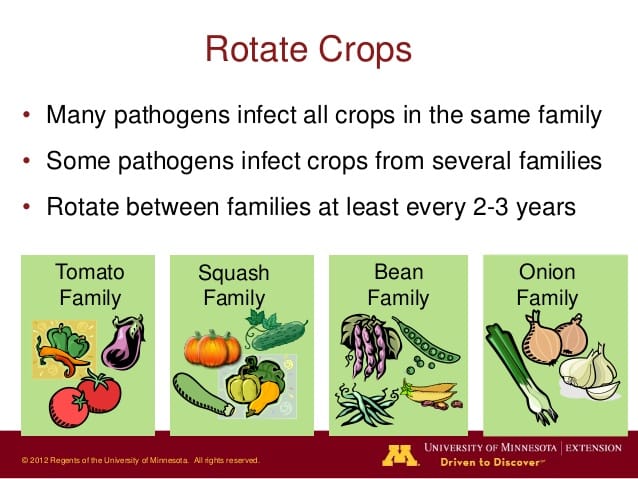 Crop rotation is a huge part of integrated pest management (IPM) in Georgia vegetable production. It is an inexpensive tool in disease and nematode management. Correctly using crop rotation can cut down on pesticide use and result in healthier plants. Growing Vegetables Organically has some great information on this type of IPM.
Crop rotation is a huge part of integrated pest management (IPM) in Georgia vegetable production. It is an inexpensive tool in disease and nematode management. Correctly using crop rotation can cut down on pesticide use and result in healthier plants. Growing Vegetables Organically has some great information on this type of IPM.
As we are all planning our warm-season gardens crop rotation is something to consider. However, it is a whole lot easier to rotate crops around a 3 acre farm than it is to move them around a 32 square foot garden plot. How do we practice crop rotation in the community garden? It is even necessary?
Crop rotation has been around for centuries. Simply it is changing what is planted in a particular area each year. Planting the same crop year after year in the same location causes disease pathogens to build up and become a real problem. Rotating crops helps break this disease cycle. Also, since different crops use varying amounts of plant nutrients, crop rotation is a wise use of the nutrition in your soil.
Plants can be divided into families. Learn those plant groupings because many pathogens infect crops in the same families. The basic rule of crop rotation is:
Don’t plant crops from the same plant family in the same place every year.
Crop families:
Onion family (Alliaceae): chives, onions, garlic
Cole family (Brassicaceae): lettuce, collards, cabbage, broccoli, spinach
Squash family (Cucurbitaceae): pumpkins, watermelon, squash, cantaloupe
Bean family (Fabaceae): beans, peas
Tomato family (Solanaceae): tomatoes, peppers, eggplant
Since tomatoes and peppers are in the same family (Solanaceae), don’t plant tomatoes where you have been growing peppers. And, don’t follow squash with pumpkins (same Cucurbitaceae family). Many farmers follow a four year or even longer rotation plan. Their lettuce won’t see the same piece of soil for several years. This helps lower disease pressure and cuts down on fungicide use. Many Master Gardeners usually try for a three year rotation for a large garden area.
We know that crop rotation works to help create healthier plants but how does that translate in a Georgia community garden plot?
The best way is for the community gardener to choose plants from different families each year. This isn’t always practical. A gardener wants to grow what his/her family likes to eat. That may mean beans every year. The #1 vegetable grown in community gardens is tomatoes – year after year!
So, maybe you work with your fellow community gardeners and rotate who grows tomatoes and you all agree to share the tomato harvest. This may not always work, either. Some gardeners want lots of tomatoes every year.
Move your pole beans to the other side of the plot this year. Buy your tomatoes from the farmers market this year and try growing squash. Better yet, try growing and eating something entirely new.

At the very least Bob Westerfield, UGA vegetable specialist, recommends turning your soil over. Dig deeply bringing up soil that hasn’t been exposed to the sun. Go as deep as you are able. In a small way you are not rotating your plants but rotating your soil. Your UGA Extension agent can help you come up with a plan for crop rotation that will work for your situation.
Happy Gardening!
- ParSLAY the Day! - June 12, 2024
- 6th Annual Great Southeast Pollinator Census - May 28, 2024
- Are you ready for Pepper Palooza? - July 5, 2023

Great stuff! Even without much room, I think I can switch sides of my plot to grow my favorite tomatoes. And I’ll dig a little deeper this spring too!
At the very least, I can vouch for the health of turning over that soil every year!